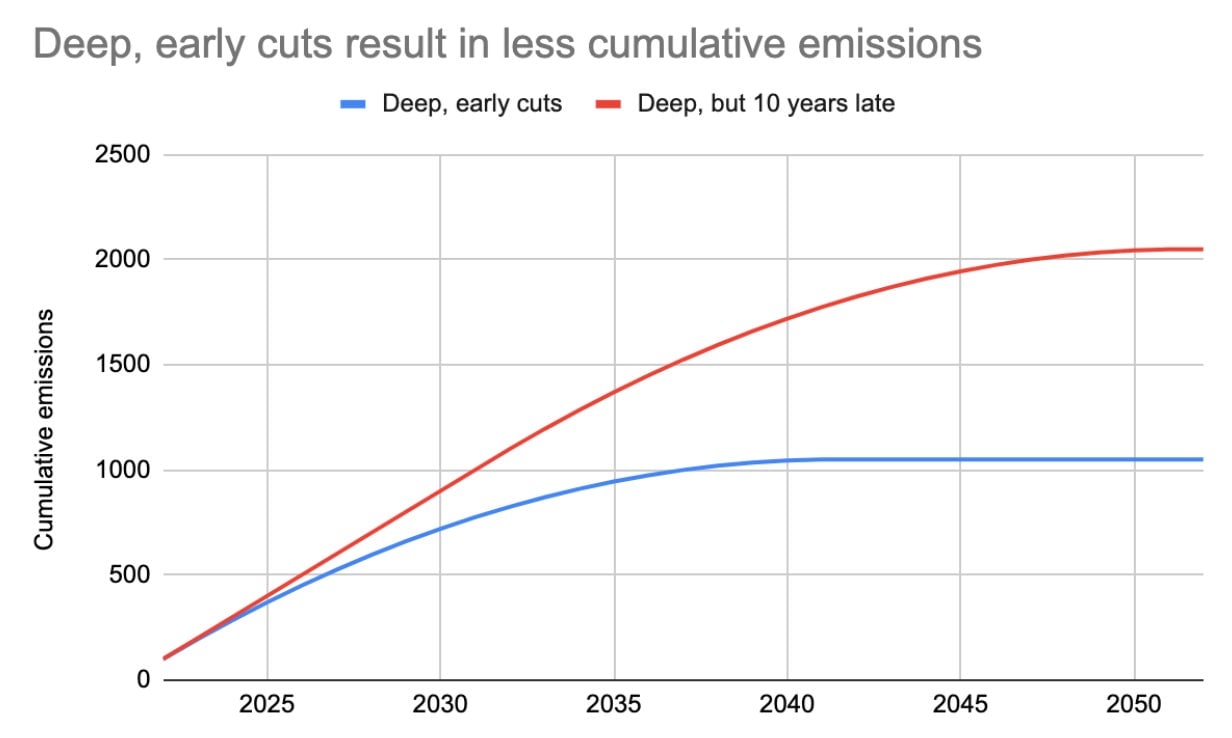Why climate charities can deliver the most charitable bang for the buck
In the new year, many people are thinking about changes they want to make in their life. For some, that means setting ambitious New Year’s resolutions. For others, it’s changing careers as part of the Great Resignation. But one of the most rewarding ways to spend your time and money in 2022?


In the new year, many people are thinking about changes they want to make in their life. For some, that means setting ambitious New Year’s resolutions. For others, it’s changing careers as part of the Great Resignation. But one of the most rewarding ways to spend your time and money in 2022?
Giving it away. Specifically, donating to a small climate nonprofit.
Last month I analyzed 65,000 IRS returns to understand how much money Americans give to environmental nonprofits each year. Like for-profit corporations, every nonprofit is categorized by the IRS based on the type of work they do. Each year, nonprofits that raise more than $250,000 must report their revenue to the IRS using Form-990. Using a tool built by ProPublica, I analyzed where non-profit donations were being given. For money given to the top 10 environmental non-profits involved in multiple areas (which account for more than 60% of environmental donations), I scoured annual reports to see exactly how money was budgeted.
What I found suggests climate is one of the most neglected causes in charity. Of the $471 billion given in 2020, donors gave $8 billion to environmental nonprofits, representing just 2% of all charitable dollars. Overall, only 0.4% of donations went to organizations directly focused on preventing greenhouse gas emissions, critical work that’s needed to prevent catastrophic climate change.
But for those concerned about the climate, this lack of funding is an opportunity.
Neglected NGOs can lead to outsized impact
The idea that some charitable contributions can create a larger impact than others is a relatively new one. In 2009 two philosophers at Oxford—Will MacAskill and Toby Ord—started Giving What We Can, one of the first organizations dedicated to researching the most effective use of charitable dollars. Shortly afterwards they coined the term, “effective altruism” to describe their work.
In 2014, GiveWell, one of the first effective altruism nonprofits, developed a new framework for evaluating the best charities. In the framework, GiveWell proposed a new idea: In order to create the largest impact, donors should focus on “neglected” causes and social problems.
“After a large amount of resources have been dedicated to a problem, you’ll hit diminishing returns,” wrote Robert Wiblin, head of research at 80,000 Hours, an effective altruism nonprofit. “This is because people take the best opportunities for impact first, so as more and more resources get invested, it becomes harder and harder to make a difference. It’s therefore often better to focus on problems that have been neglected by others.”
Climate change might not seem like a neglected issue based on how often it makes news headlines, but my recent analysis shows that climate advocacy is one of the most neglected causes in all of philanthropy. And the nonprofits doing this work are also critical in the fight against climate change.
The private sector alone can’t get us there
A common assumption about climate action is that market forces will get us to net-zero emissions by 2050, the target set under the Paris Agreement. The market, some argue, has been responsible for the majority of progress in reducing emissions: Tesla made EVs sexy, SunRun made rooftop solar easy, and the falling price of renewables, batteries, and other climate solutions are thanks to private investments.
But this overlooks the essential role of policy and government at ushering this technology to market. While Tesla CEO Elon Musk likes to disparage big government and taxes, his company has benefitted massively from policy and federal investment. Long before there was mass-market demand for electric vehicles, the US Department of Energy invested billions in battery and electric vehicle technology — a scale of investment and risk that no single company was willing (or able) to take at the time. In 2009 the federal government rescued Tesla with a $465 million government-backed loan. Throughout the company’s existence, both government subsidies and zero-emissions vehicle programs have bolstered revenue. Without government policy, Tesla wouldn’t be the trillion-dollar company it is today. The same goes for a suite of critical technology to the energy transition including solar panels, wind turbines, and batteries.
Behind nearly every climate policy, it turns out, was a nonprofit or coalition of nonprofits that came up with the initial idea, wrote the legislation, and lobbied political leaders to pass it.
The 2021 infrastructure bill is evidence of this. Carbon180, a relatively new nonprofit, spent years building relationships with leaders in Congress and designing new policies that could accelerate carbon removal technology. This year, as a result of that work, the US government allocated billions for R&D that could kickstart the carbon removal industry that—like it or not—will be vital to keeping average temperatures below 1.5° or 2° Celsius.
Funding organizations like these is one of the most effective ways to address climate change. And it’s up to donors, big and small, to support these nonprofits. While it might not seem like a $100 or $1,000 donation can make a difference, scrappy climate nonprofits have already shown how they can leverage small amounts of money to enact national or even global changes.
And plenty of such organizations exist today. From my own research, I estimated for every dollar donated to non-profits like Evergreen Action, Rewiring America, and WE ACT for Environmental Justice, roughly one ton of greenhouse gas emissions are abated in the US policy action. You can see similar recommendations for organizations such as Clean Air Task Force from GivingGreen.
Why it’s time to start giving now

One common reason why people don’t give money early in life is that they believe they can invest it today to give more later. For example, $300,000 invested today could turn into $3 million in 30 years due to the power of compound returns.
For many social problems, this logic makes sense. But if you care about climate change, the science makes it clear that the time to give is now. To understand why, it’s helpful to understand the importance of “deep, early cuts” in addressing climate change.
Imagine a country with 100 tons of greenhouse emissions per year. It decides to cut emissions deep and early at the rate of five tons per year. That country would reach net-zero by 2042 and have 1,050 cumulative emissions between now and then.
Now imagine a country that drags its feet for the next 10 years, but eventually reduces emissions by five tons per year starting in 2032. That country would reach net-zero emissions by 2052. That doesn’t seem that bad. But because they delayed, they would end up with about twice the cumulative emissions as the country that acted sooner.

Ultimately, if we want to prevent catastrophic warming, the goal is to reduce total greenhouse gases in the atmosphere as much as possible today. The best way to do that is to pursue deep, early emissions reductions.
And just as every individual can do their part to prevent the spread of a pandemic, everyone can do their part to advocate for deep, early emissions reductions. Given how neglected climate philanthropy is today, supporting climate non-profits organizations is a great way to do it.